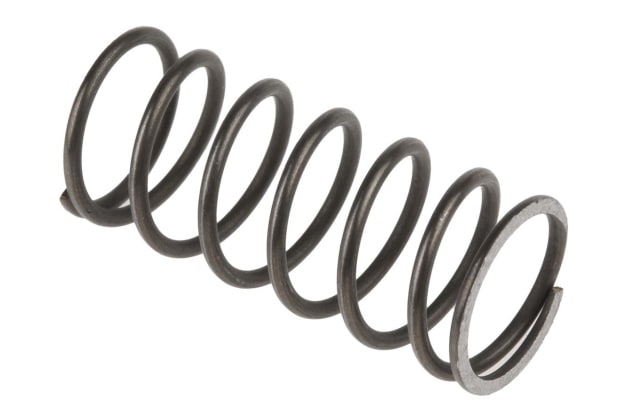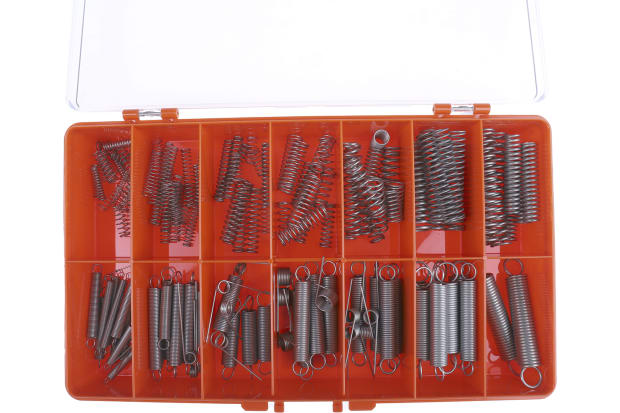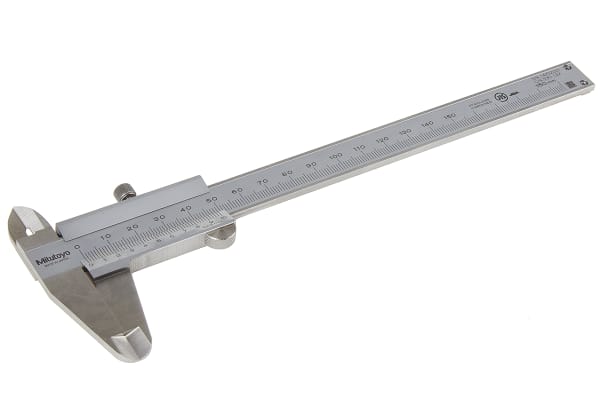- Published 24 Jan 2023
- Last Modified 29 Aug 2023
- 7 min
A Complete Guide to Compression Springs
Our guide focuses on compression springs - what they are, how they work, and how to measure them.

The purpose of this guide is to provide an overview of various key types of compression springs, and some of the more common roles they are used in.
We will cover several of the most popular styles and sizes available online in the UK, as well as where to buy compression springs for a range of everyday uses. We will also look more closely at how they work and explain how to properly measure them. The aim is to make it easier to choose the best coil springs for a specific job.
What are Compression Springs?

Compression springs are also widely known as coil springs and are arguably the classic version of a familiar spring. When compressed under load, they create resisting (push back) force as the spring attempts to return to its normal, uncompressed height or length.
They are an ideal solution in many situations that require a pushing force to counteract pressure going in the opposite direction. As such, they can be found in many different applications and settings. Common examples of coil springs in everyday use include anything from ballpoint pens and door hardware to precision tools, vehicles, electronic devices, button switches, medical equipment, and heavy-duty industrial machinery.
In addition to simply providing an immediate pushback force, springs of this type held under tension offer an effective and economical way to store large amounts of potential energy. This can prove useful in a wide range of products and scenarios.
Most compression springs are made from open-coiled steel wire, but there is an endless variety of sizes, stiffness (spring rate), and cross-section design and shapes available. For instance, more specialised options include conical, concave, garter, barrel, and hourglass springs. In fact, there are few limits to how large or small a coil spring can be made. Tiny versions are often found in handheld electronic devices like mobile phones, keyboards and mice, while products built for automotive or industrial use can be much larger and heavier.
How Do Compression Springs Work?
Compression springs work by resisting and pushing back against any downward or inward force that tries to squash and hold them in a compressed state. They push back against these forces, always seeking to return to their natural open or slightly extended state when not held under pressure.
Another effective way to answer the question ‘how do compression springs work?’ is to contrast them with different types of springs. Nearly all springs in widespread use are described and defined by the way they should be loaded.
Common examples of products that rely on different types of loads, torques and forces to coil springs include (ex)tension and (ex)torsion models.
- A tension spring is designed to create a pulling force. It is installed and held under tension while fully extended and will immediately try to return to a fully contracted state when released. In this sense, it effectively performs as the opposite of a coil spring
- A torsion spring is held in twisted rotation around its central axis, such that it wants to snap back when pressure is released (or applied, in the case of an extorsion spring). Clothes pegs, chair adjustment controls, workshop clamps, and many types of hinges are all everyday examples of a torsion/extorsion spring in action
The amount of force that a compression spring can resist - in other words, the overall strength, stiffness, or spring rate of a given product - depends on various metrics and specifications. These include its physical design, material strength, and manufacturing methods.
However, generally, the best way to manufacture a compression spring to be stronger or weaker is to adjust the ratio of wire diameter to overall spring diameter. Thicker wire or a narrower coil will make the spring rate higher, while thinner wire or a larger diameter coil will result in a weaker spring force.
How to Measure Spring Length

How do you measure a spring? It is not always obvious what precise size is needed to create the required type of resistance force in a specific application. There are multiple dimensions to consider, including length, wire diameter, outside diameter, and wire gauge.
When learning how to measure spring length accurately, the preferred method is always to use a dial or digital caliper. This will provide much more precise measurements, which can be critical in certain specific applications.
For a compression or coil spring, the length is measured from end to end while in a coiled but uncompressed state, also known as its free length. Place the caliper at either end of the coiled spring while it rests loosely on a flat surface in its natural state - under no compressive force whatsoever - and measure accurately.
Types of Compression Spring
There are many types, styles and sizes sold in the UK and elsewhere. Compression spring manufacturers provide high-quality products in a range of diameters, lengths, and materials, to suit every industry and application. The majority are made from open-coil steel wire (often stainless steel or high carbon steels), but aluminium compression springs are also widely available. However, stainless steel compression springs are the most popular.
Regardless of size and stiffness, the standard design will almost always be a helical wire coil. This can be compacted and held under varying amounts of pressure, but in its natural state, any true coil spring will immediately return to its fully extended form. Conical compression springs are also available but these are less widely used than the standard design.
Many products sold by spring manufacturers as coil springs will primarily be intended for use on cars. Their ability to effectively absorb impact or shock makes them an integral component in many vehicle suspension systems. However, this trait also makes compression springs of all sizes and stiffness an ideal component in many other settings.

Spring Kits
Compression spring kits are also available. These provide a range of different shapes and sizes, giving greater flexibility in terms of spring design and requirements.
Spring suppliers such as RS offer a selection of these handy kits to provide you with the supplies you need for your project.
Different types and formats include:
Small Compression Springs
Very small coil springs - often called micro springs - are commonly found in a diverse array of pocket-sized devices and tools. Wire diameters for everyday use at this scale typically start from as little as 0.25mm, with an overall outer diameter of a micro spring measuring somewhere in the region of 2-3mm. However, for more specialised uses and devices, small springs can be made considerably thinner even than this.
Large Compression Springs
Large compression springs tend to be designed with thicker diameters and higher spring rates. They are used widely across many different products, industries and applications. Some of the most common uses for these types of large coil springs include:
- Cars, trucks and other vehicles
- Suspension systems, pneumatic and hydraulic components
- Valves, engines and turbines
- Door hardware, gates and locking mechanisms
- Printing and stamping presses
Heavy-Duty Compression Springs
Heavy-duty versions are often branded as high load compression springs. These are much larger and thicker springs, capable of supporting and resisting significant pressure forces or storing large amounts of energy long-term. They are often found in applications as diverse as architecture (buildings and bridges), aerospace engineering, mining and drilling rigs, and industrial lifting platforms.
Related Guides
Related links
- Compression Springs
- Extension Springs: A Complete Guide
- RS PRO Stainless Steel Compression Spring 1.67N/mm
- RS PRO Stainless Steel Compression Spring 0.45N/mm
- Schneider Electric Stainless Steel Compression Spring
- RS PRO Alloy Steel Compression Spring 1.8N/mm
- RS PRO Alloy Steel Compression Spring 0.22N/mm
- RS PRO Alloy Steel Compression Spring 4.51N/mm

